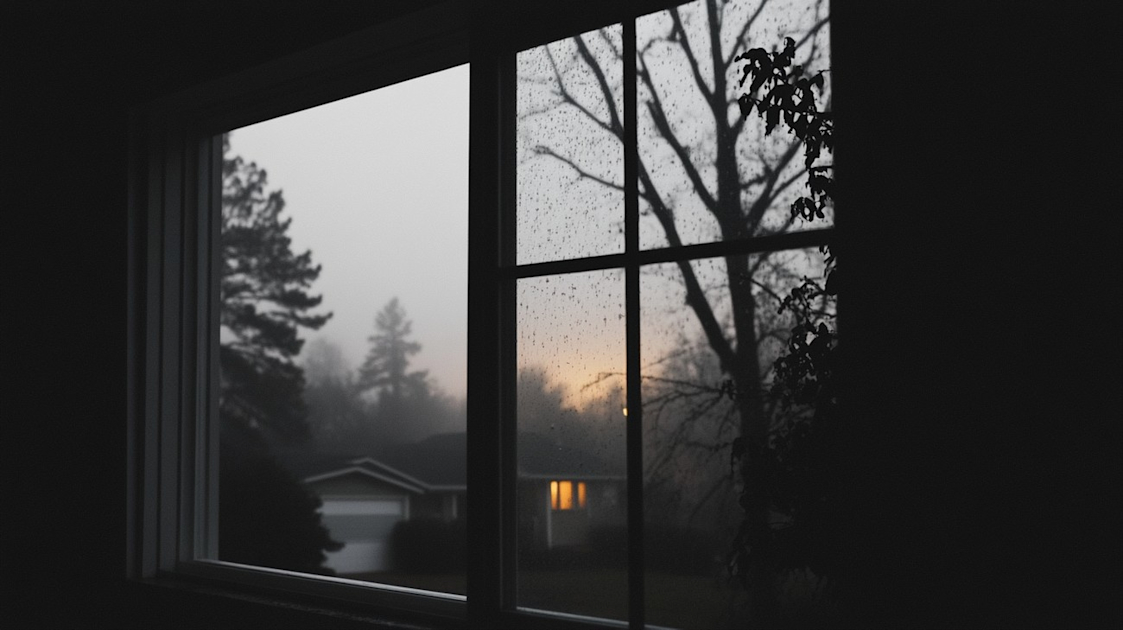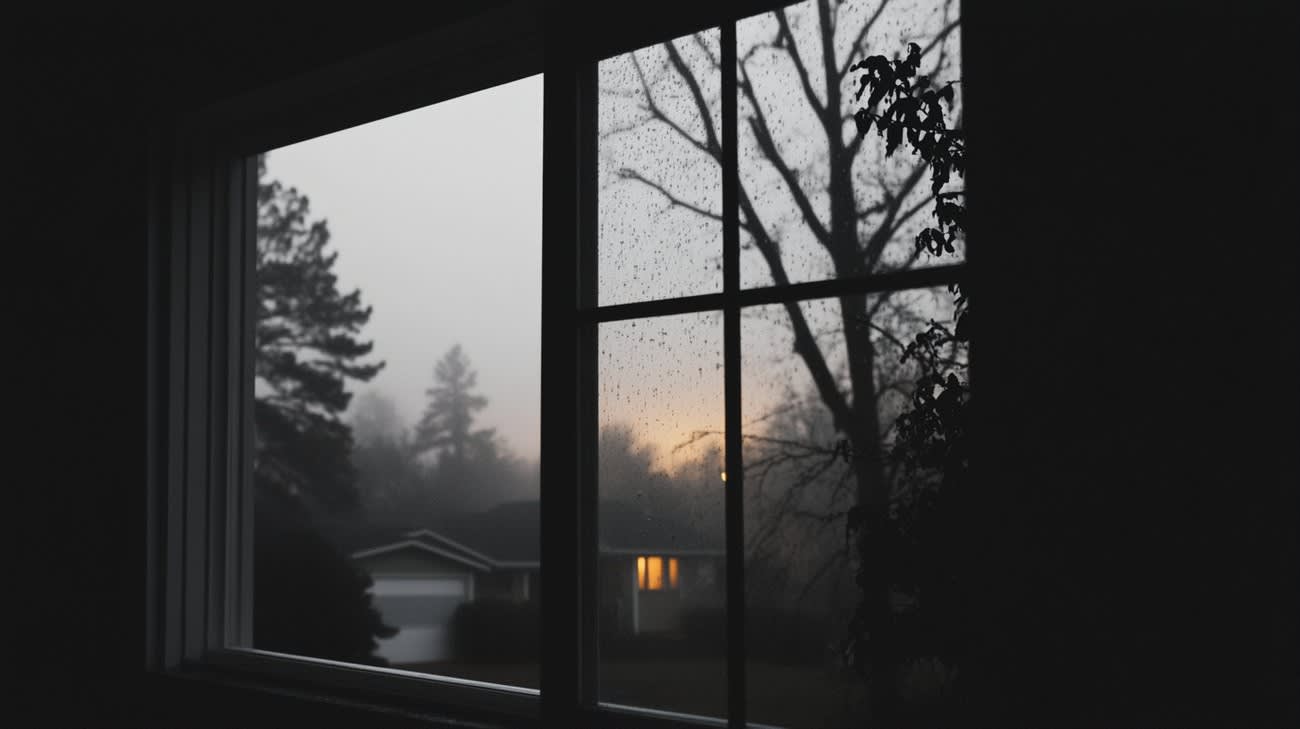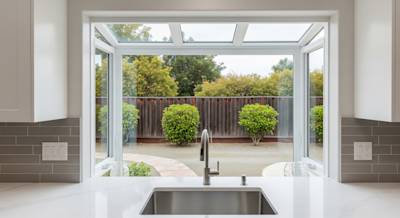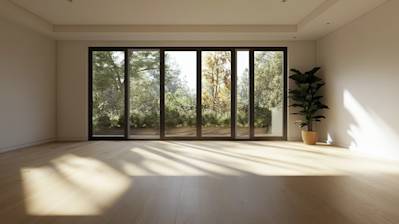If you have perhaps noticed tiny droplets of water forming on the interior of your windows, this is an indication of possible moisture buildup. "Moisture buildup on inside of windows" is a common problem that can lead to significant issues if not addressed correctly. This comprehensive guide is designed to explore the concept of moisture buildup in detail and provide useful insights into mitigating its effects.
Understanding Moisture Buildup on Inside of Windows
In layman's terms, moisture buildup or condensation usually forms due to differences in temperatures inside and outside your home. When the warm air inside your house, laden with moisture, comes into contact with the cold surface of the window glass, it cools down and releases water droplets that lead to condensation.
Causes of Moisture Buildup
Here are some common causes that result in moisture buildup on the inside of your windows:
- High humidity levels: Aiding in the comfort and health levels of owners, a house with slightly moist air is desirable. However, high humidity can lead to an excess of moisture.
- Poor ventilation: Lack of proper air circulation contributes to a higher chance of condensation forming on your windows.
- Temperature fluctuations: High variations in indoor and outdoor temperatures can lead to rapid condensation.
Negative Effects of Moisture Buildup
The moisture buildup on the inside of your windows might seem a slight concern but can lead to severe problems if ignored. Some of these problems include:
- Damage to window frames and sills: The accumulated moisture can damage the wood or steel frames and sills over time, leading to decay or rust.
- Mold growth: This moist environment serves as the perfect breeding ground for mold and bacteria, which can trigger allergic reactions in inhabitants.
- Poor energy efficiency: The accumulation of moisture can affect the thermal efficiency of windows, leading to higher energy costs as the heating system works harder to maintain a consistent temperature.
Preventing Moisture Buildup on Inside of Windows
Preventing moisture buildup can save you from potential property damage, health risks, and unnecessary repair costs. Here are some ways to do it.
Improve Ventilation
Proper ventilation plays a vital role in reducing the moisture levels in your home:
- Install exhaust fans in high-humidity areas like the kitchen and bathroom.
- Use a dehumidifier to reduce moisture content in the air.
- Open windows regularly to ensure adequate circulation of fresh air.
Reduce Indoor Humidity
Reducing indoor humidity is a great way to combat window condensation:
- Take cooler, shorter showers to reduce the amount of moisture in the air.
- Avoid drying clothes inside, as this significantly raises humidity levels.
- Use a hygrometer to monitor indoor humidity and aim to keep the surrounding area's humidity level below 60% during summers and between 25-40% during winters.
Opt for Insulated Windows
Upgrading to double-pane or triple-pane windows can exceptionally decrease the chances of condensation as they provide better insulation, reducing the temperature difference between the inside and outside of the window.
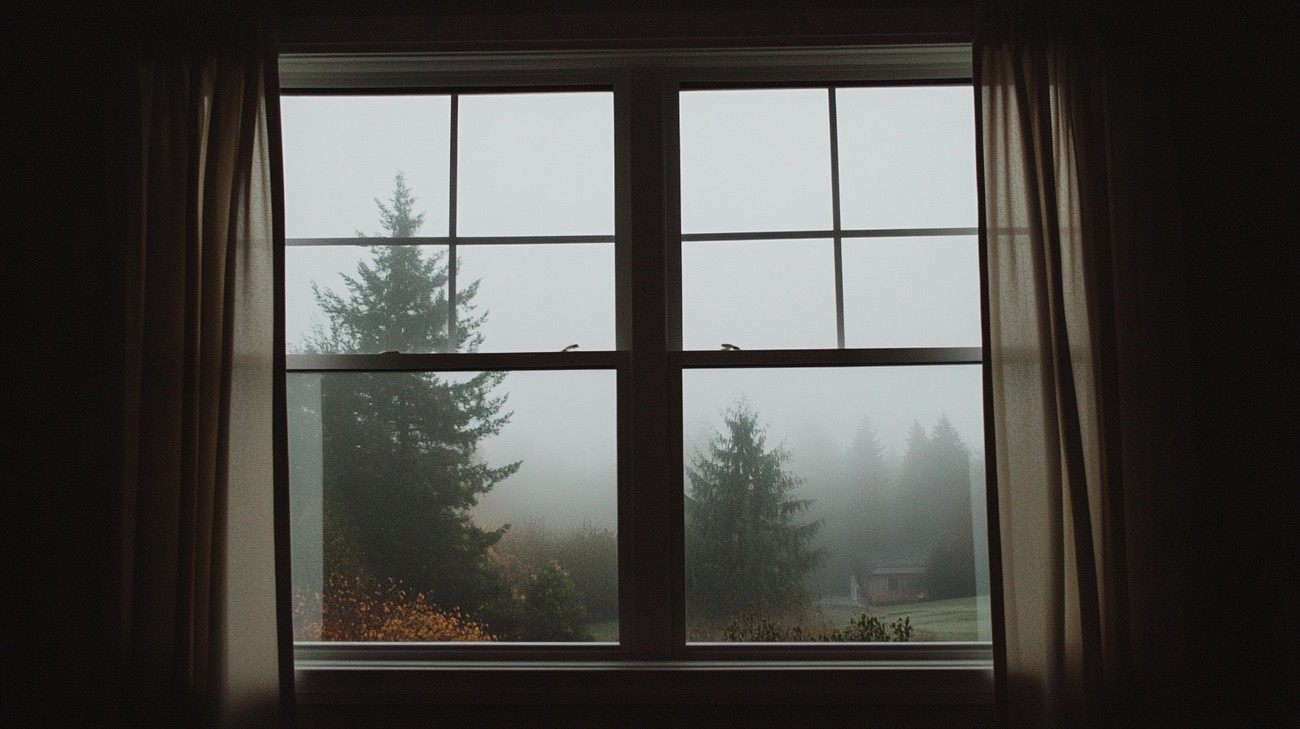
Frequently Asked Questions about Moisture Buildup On Inside Of Windows
How can I reduce moisture buildup on my windows?
There are several ways to reduce moisture buildup on your windows. One of the most effective is to reduce the humidity in your home by using dehumidifiers or air conditioning units. You can also frequently ventilate your rooms, especially after activities that increase humidity levels such as cooking or showering. Insulating your windows can also help by reducing the temperature difference between the inside and outside of your windows.
What causes excessive moisture buildup on the inside of windows?
Excessive moisture buildup on the inside of windows can be due to a few factors. High humidity levels in your home, often caused by activities like cooking, showering, or using appliances that produce steam, can contribute to more moisture on your windows. Additionally, poor ventilation in your home and poorly insulated windows can also lead to excessive moisture buildup.
Is it normal to have moisture buildup inside double-pane windows?
Even though double-pane windows are designed to be more efficient and prevent condensation, it's not entirely unusual to find moisture buildup inside them. This can occur if the sealant between the two panes has failed, allowing moisture to seep in. Moisture buildup in double-pane windows can also indicate that the desiccant, the material inside the window frames that absorbs moisture, has become saturated and is no longer functioning properly.
What happens if I ignore the moisture buildup on my windows?
Ignoring moisture buildup on your windows can lead to a few potential problems. Over time, constant moisture can damage your window frames, particularly if they are made from wood. Left unchecked, this could result in the need for costly repairs or replacements. In addition, excessive moisture can cause mold or mildew to grow, which can be harmful to your health.
Can I use a fan to reduce moisture buildup on windows?
Yes, using a fan can help to reduce moisture buildup on your windows. By circulating the air in your home, fans can help to disperse the moisture in the air and reduce condensation on your windows. Fans can be particularly effective in rooms with a lot of moisture, such as kitchens or bathrooms.
What are some signs that I have an issue with moisture buildup on my windows?
Some signs of a problem with moisture buildup on your windows include regularly finding your windows "sweating" or being wet, especially when the outside temperature is cold. You might also notice dampness around your window frames, peeling paint, and a musty smell, which could be indicative of mold or mildew caused by excess moisture. In some cases, you might also see visible signs of water damage on or around your windows.
What should I do if there's mold due to moisture buildup on my windows?
If you notice mold due to moisture buildup on your windows, it's essential to address it quickly to protect your health and your home. First, clean the moldy areas with a solution made of bleach and water. Then implement strategies to reduce the moisture in your home to prevent the mold from coming back, such as using a dehumidifier, enhancing ventilation, or installing insulating windows.

Pros of Moisture Buildup on Inside of Windows
Increases Indoor Humidity
Health Benefits
Moisture buildup on your window panes can increase the overall humidity inside your home. This is particularly beneficial during the dry winter months when low humidity can cause skin dryness, chapped lips, and can even exacerbate respiratory problems. Increased indoor humidity can prevent these issues and promote a more comfortable living environment.
Better for Houseplants
If you are a plant enthusiast, you might think of moisture buildup on windows as a boon. Most houseplants thrive in a more humid environment which this moisture buildup can provide.
Traps Heat
One of the main causes of window condensation is the temperature differential between the inside and the outside of your home. This means if you have condensation on your windows, it's likely your windows are doing a decent job at insulating your home.
Energy Efficiency
Energy loss through windows is a major concern for homeowners. When there is moisture between your windows, it signifies that your windows are trapping heat inside your home and keeping the cold air out. This can increase the energy efficiency of your home, leading to lower heating costs in cooler months.
Cons of Moisture Buildup on Inside of Windows
Damages Window Frames
Moisture buildup is harmful to your window frames, especially if they are wooden. Over time, the incessant moisture exposure can cause your wooden frames to warp, rot or discolor.
High Repair Costs
The cost of repairing or replacing damaged window frames can be high. If the moisture buildup is recurrent, this can become a significant recurring household expense.
Compromises Indoor Air Quality
Though moisture can increase indoor humidity and help alleviate dry skin issues, too much of it can lead to an overgrowth of harmful molds and mildews, compromising your home's indoor air quality.
Respiratory Problems
Exposure to high mold and mildew levels can lead to various health issues, especially respiratory problems. This is a significant concern for individuals with asthma and allergies and can be particularly harmful to elderly individuals and young children.
Impedes Vision
A significant disadvantage of moisture buildup on windows is that it can fog up your windows, obstructing your view. It not only prevents you from enjoying the scenic beauty outside, but it can also reduce the amount of natural light that your home gets, making it feel gloomier.
Reduces Property Value
Continued moisture buildup and the damage it causes can negatively impact your property value. Not only does it show that the home has not been adequately maintained, but potential buyers may also be wary of the potential repair costs.
Discourages Potential Buyers
When it's time to sell your property, seeing signs of moisture buildup on windows can deter potential buyers. This might limit the number of offers you receive, making it more challenging to sell your home for the price you desire.
Increases Maintenance Work
Finally, moisture buildup on the inside of windows can increase the amount of maintenance required. From constantly wiping down the windows to needing to replace or repair damaged frames, it can take a significant chunk of time to keep on top of it. This could prove to be inconvenient, especially for homeowners with busy schedules.

Myths and Misconceptions About Moisture Buildup on Inside of Windows
Myth 1: Only Faulty Windows Accumulate Moisture Inside
One of the pervasive myths about moisture buildup on the interior of windows is that it usually arises from faulty or substandard windows. Contrary to this belief, modern, well-installed windows can also experience condensation, especially during colder months. Water vapor in the warm interior air condenses upon contact with the colder surface of the window, leading to the moisture buildup. It's more about the difference in temperature and not about the quality of the window.
Myth 2: Double- or Triple-Glazed Windows Never Have Condensation
The advantage of double- or triple-glazed windows is that they improve insulation between the inside and outside, but they can't entirely prevent condensation. Even with their enhanced design, water vapor present inside your home can still condense, especially during the cold season when the interior window glass stays cooler than the moist, warm air inside the dwelling.
Myth 3: Moisture Buildup on Windows Indicate Poor Window Quality
There's a common belief that windows fogging up is a clear indication of their poor quality. This isn't necessarily the case. A window is not always the problem, but it is a visible symptom of high humidity levels inside your home. So, the problem might not be your window but could be issues like insufficient ventilation, especially in high-moisture zones such as kitchens and bathrooms.
Myth 4: Moisture Buildup is Harmless and Purely Aesthetic
Undoubtedly, condensation on windows can detract from your view, but that's not the only issue. The myth that the worst moisture buildup can do is fog your view needs to be debunked. Persistent moisture can damage your window frames and sills, especially wooden ones, gradually leading to mold growth, peeling paint, or rot. Moreover, heavy condensation can drip down and ruin your wall finish and floor, leading to more severe mold issues.
Myth 5: Wiping Away the Condensation is the Best Solution
Many people believe that regularly wiping away the condensation will solve the problem. This measure only offers a temporary solution as it doesn't address the root cause, which is often high humidity levels in your home. The water you wiped away will probably re-form within a short time. It's better to take measures that lower the humidity level, such as improving ventilation, using dehumidifiers, or thermostat management.
Myth 6: The Temperature of the Window Pane Causes Moisture Buildup
True, there is a correlation between cold window surfaces and condensation. But what's often ignored is that the real cause of the condensation is not just the temperature of the window pane, but the indoor humidity levels. If your home's interior has high humidity, it's likely to cause moisture to condense on the cold glass of the windows regardless of their quality or type.
Myth 7: Heating Your House More Will Prevent Window Condensation
Heating your house more during the cold months may seem like a feasible solution to stop window condensation. This is a misconception, however, as simply raising the temperature won't necessarily address the problem if your house has high humidity levels. Instead, it can even make the problem worse by increasing the capacity of the air to hold moisture.
Myth 8: Sacramento Window Replacement is the Ultimate Solution
There's a belief that replacing old windows is the ultimate solution to rectify indoor moisture issues. Replacing a window may solve the problem if the window is faulty or if it's a single-pane window. However, if dual-pane windows are also seeing condensation, the issue likely lies with high humidity levels inside your house, not with the windows. Addressing the source of the dampness will often solve the problem.
By dispelling these myths and misconceptions about moisture buildup on the inside of windows, you will be better informed to deal with the issue effectively and ensure a more comfortable and healthier living environment in your home.
Summary
As we've seen, the issue of moisture buildup on inside of windows is more than just an eyesore. It can lead to serious problems like mold and mildew growth, which can have detrimental effects on the health of the building's occupants. Additionally, it can also damage the structure of the home and decrease the durability of the windows, leading to costly repairs or replacements. It's truly surprising how something as simple as water droplets on the glass can pose such large risks.
It's not all doom and gloom, though. There are actionable ways to address the issue of moisture buildup on inside of windows. These measures range from using dehumidifiers, air conditioners and fans to increase ventilation, to implementing energy-efficient windows and ensuring proper insulation of your home's structure. With these practical steps, homeowners and building managers can effectively reduce the moisture buildup and enjoy clear, view-worthy windows.
Remember, prevention is always better than the cure. By understanding the causes of moisture buildup on inside of windows and taking proactive steps, you can save yourself from significant health risks and potential financial burden in the future. So, the next time you see your windows fogging up, don't just wipe it off; take it as a sign that you might need to work on the home’s humidity levels. By doing so, you not only protect your investment but more importantly, ensure a healthier living space for everyone.
About GVD Renovations & Remodeling
GVD Renovations & Remodeling is a well-established home improvement company based in Roseville, CA. With a solid reputation and more than 15 years experience in the industry, we have been delivering outstanding service and top-quality results to homeowners throughout the community. Specializing in both interior and exterior home renovations, our team of skilled and passionate craftsmen handle everything from simple repairs and upgrades, to full-scale remodels. At GVD Renovations & Remodeling, we're not just in the business of making homes look good - we're dedicated to making homes work better for those who live in them. From charming vintage homes to modern residences, our expertise spans a wide variety of architectural styles. We aim to provide a seamless experience and unbeatable value for every customer.
This article is for general information only and not professional advice. Always consult a licensed contractor before making project decisions. Product details, specifications, or warranties may have changed since publication. Brand and product mentions reflect opinion, not endorsements or guarantees.
Tags: moisture buildup, window condensation, interior window moisture,


